Four issues will determine what the future of assisted living will look like, according to participants in a recent round table sponsored by the Center for Excellence in Assisted Living (CEAL). Those issues include:
- Personnel.
- Data.
- State regulations.
- Affordability.
“The Future of Assisted Living: Consumer Preferences and the Era of Healthcare Reform,” took place in October and was attended by 35 assisted living stakeholders representing:
- Residents and their family members.
- Assisted living providers.
- Health care professionals.
- State Medicaid staff.
- Accountable Care Organizations (ACO).
- Managed care organizations (MCO).
- The disability community.
CEAL will release a white paper in early 2015 based on the information and data shared by panelists, attendees, and keynote speaker David Grabowski, Ph.D., professor of health care policy at Harvard University.
The round table was designed to help identify ways in which assisted living must evolve so it remains a viable service of choice in the changing pay-for-performance health reform landscape. Within this landscape, assisted living providers will be more attractive partners for ACOs and MCOs if they address the following 4 issues.
Personnel
Round table participants identified several steps to developing and increasing assisted living staff competencies. These steps include:
- Elevate professionalism by creating tools to document, measure and demonstrate competencies, including credentialing standards.
- Provide personal and professional development by creating ladders, lattices and life skills resources for all personnel.
- Engage the support of family, care partners, volunteers, and others to work with personnel as a team that respects each other’s knowledge and skills.
- Provide training to counteract ageism in current and new personnel.
- Develop training strategies to address assisted living care trends, personnel shortages, diversity among personnel and care recipients, staff retention, and staff engagement and wellness.
Data
Assisted living has some work to do to ensure that data is collected and shared across settings so assisted living communities can participate in MCOs and ACOs. The data collection should:
- Include quality measures/outcomes.
- Focus on individual preferences, goals and psychosocial needs, in addition to medical and health care related data.
- Feature better communication and data sharing among stakeholders.
State Regulations
While round table participants supported continued regulation of assisted living at the state level, they also recommended that these regulations should:
- Be evidence-based and reflect best practices in assisted living, including credentialing for key personnel, person-centered care, and innovation.
- Focus on person-centeredness and allow individuals to age in place through evolving community-based models like assisted living without walls.
- Support state/provider collaboration.
- Feature a survey process that emphasizes education and collaboration rather than correction or punishment.
Affordability
The costs associated with assisted living should be comparable to skilled nursing and should provide affordable private-pay options for middle class individuals. To meet this goal, stakeholders should take steps to:
- Ensure that regulations create the potential for Medicaid reimbursement through ACOs and MCOs.
- Create models, like assisted living without walls, to fill the need for affordable senior living.
- Develop partnerships with existing advocates for affordability, including AARP.
- Educate consumers about their responsibility to fund their own care.
Additional Themes
During their discussions, round table participants identified 14 emerging themes in the field of assisted living. Those themes underscore the need to:
- Include a full spectrum of services, from hospitality through health care, in the assisted living model.
- Provide services in a wide variety of settings to individuals who are increasingly diverse in their age, culture, lifestyle, level of disability, preferences and care needs.
- Focus less on real estate and more on providing person-centered services in homes and communities.
- Partner with home health organizations and community researchers to create new models that satisfy evolving consumer preferences.
- Use technology to foster quality, care coordination, access, affordability, and an enhanced work life for staff.
- Keep the “Home” in assisted living by focusing on the individual without disturbing the home environment.
- Support regulations that foster freedom of choice and managed risk as well as evidence-based practices that promote risk reduction.
- Educate consumers about a variety of topics, including privacy of personal information, informed decision making, the role of long-term care navigators in decision making, advance care planning, and planning ahead to fund long-term care.
- Accommodate ongoing changes in operating models and physical environments.
Source: LeadingAge
